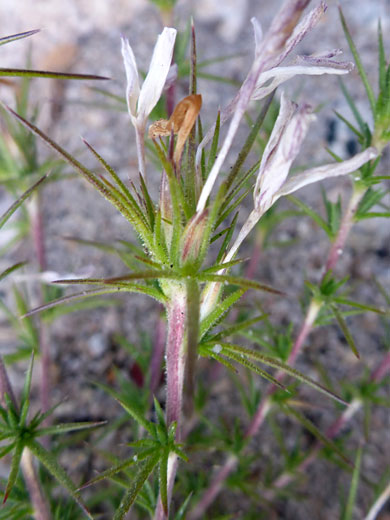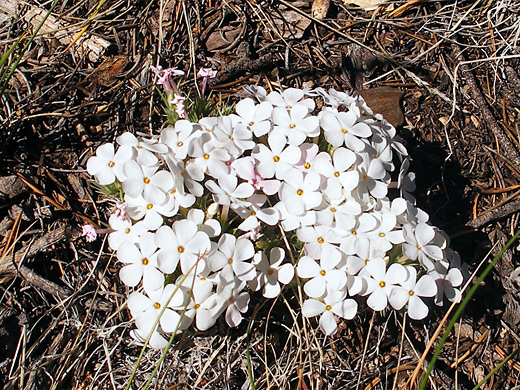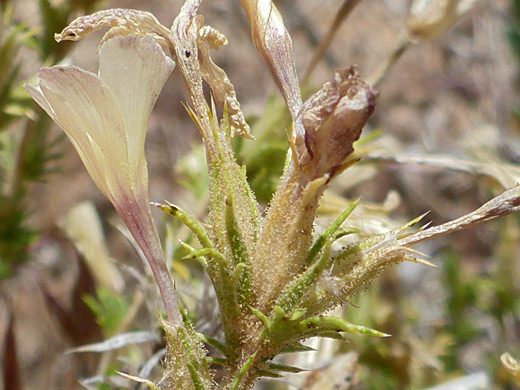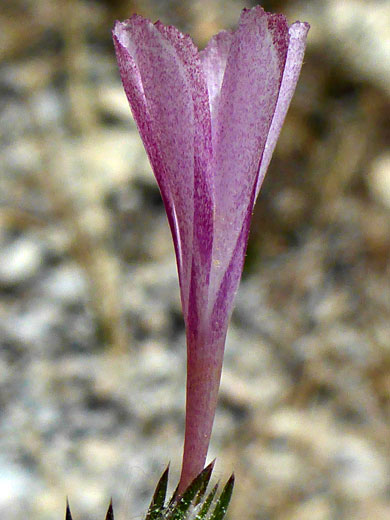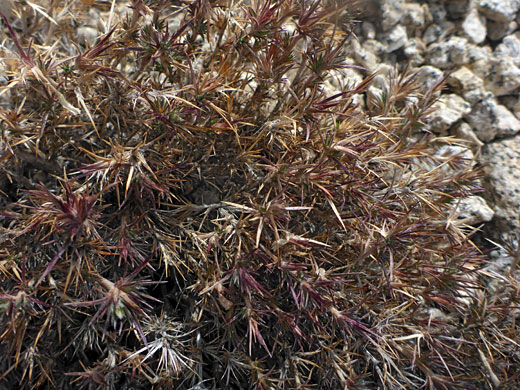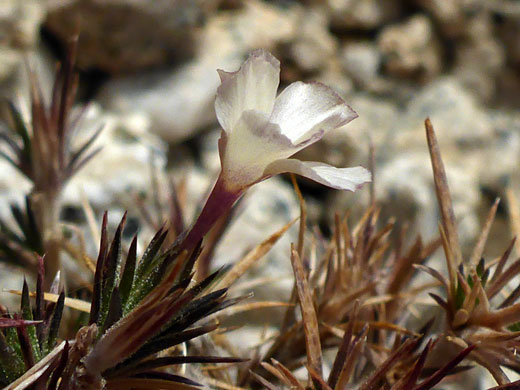Common names:
Granite prickly phlox, granite gilia
Family:
Scientific name:
Linanthus pungens
Main flower color:
Range:
All the western states; east to Montana, Wyoming, Colorado and New Mexico
Height:
Up to 2 feet
Habitat:
Pinyon-juniper forests, grassland, mountain slopes, desert washes
Leaves:
Palmately divided into between 3 and 7 thin, linear, sharply-pointed lobes
Season:
May to September
In particularly favorable environments, stems of linanthus pungens may grow upwards, becoming two feet high or more, but the plant usually spreads sideways, staying close to the ground. The branched stems have a dense covering of short, prickly leaves, and are topped by five-petaled flowers, white in most specimens but sometimes pale yellow or pale pink.
Flowers consist of a narrow tube up to an inch long, opening out to the obovate-shaped petals at right angles. Flower centers are yellow. Calyces and leaves may have a glandular hair covering, or be glabrous. The five calyx lobes are narrow, pointed at the tip, and somewhat different in length. The plant inhabits a wide range of habitats, from high desert washes around 5,000 feet to rocky areas in mountains, above the treeline, up to 12,000 feet.
Flowers consist of a narrow tube up to an inch long, opening out to the obovate-shaped petals at right angles. Flower centers are yellow. Calyces and leaves may have a glandular hair covering, or be glabrous. The five calyx lobes are narrow, pointed at the tip, and somewhat different in length. The plant inhabits a wide range of habitats, from high desert washes around 5,000 feet to rocky areas in mountains, above the treeline, up to 12,000 feet.
All Contents © Copyright The American Southwest | Comments and Questions | Contribute | Site Map



